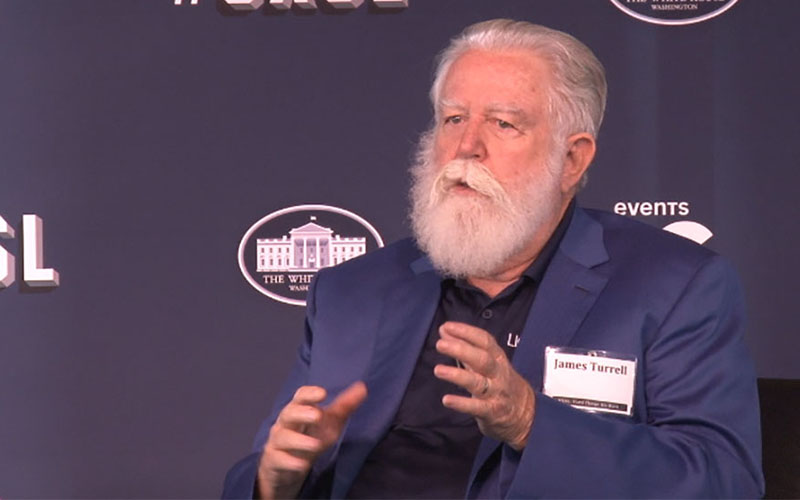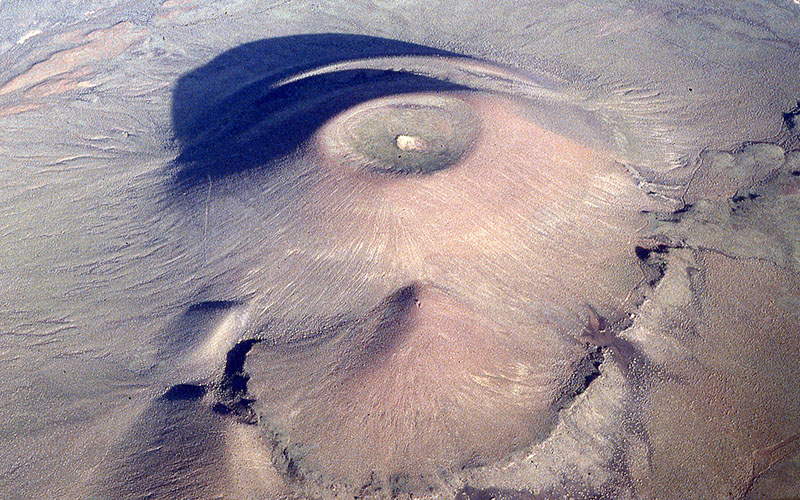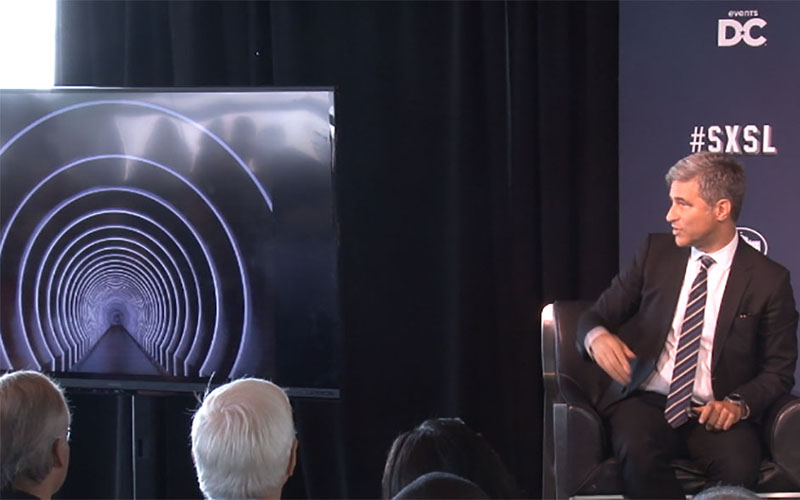
Artist James Turrell talks about his work in northern Arizona’s Roden Crater, a massive art installation that has been almost 40 years in the making – with no end in sight. (Photo by Sabella Scalise/Cronkite News)

The volcanic Roden Crater has been the site since 1977 of a project to channel light into rooms and hallways inside the crater, bringing “the cosmos to the Earth.” (Photo by Dale Nations/Arizona Geological Survey)

Los Angeles County Museum of Art Director Michael Govan with an image of one of the light-channeling tunnels at the Roden Crater, which he said is like a “staircase to the heavens.” (Photo by Sabella Scalise/Cronkite News)
WASHINGTON – To mapmakers and geologists, it’s Roden Crater, a volcanic cone outside Flagstaff.
To artist James Turrell, who has spent his career working with light installations, it’s his “unfinished dissertation,” a massive art project that he started almost 40 years ago and for which he has no estimated opening date.
The project has already involved moving 1.3 million cubic yards of earth and creation of an 854-foot tunnel in the crater. When finished, it will have 21 viewing spaces and six tunnels that will channel light into the crater, according to the project’s website.
By directing natural light through tunnels and apertures in the crater, Turrell said Monday that he aims to create an observatory for the naked eye in a project that will bring the “cosmos to the Earth.”
Or, as an art curator said today at the South by South Lawn White House event where the project was discussed, it’s like a “staircase to the heavens.”
“It’s almost like the world’s biggest refractor telescope, but it’s not for scientific study, it’s for emotional and perceptual study,” said Los Angeles County Museum of Art Director Michael Govan.
He joined Turrell and architect David Adjaye – who designed the Smithsonian’s striking new National Museum of African American History and Culture on the National Mall – for a discussion on immersive public spaces on a grand scale. The event at the Newseum was part of the White House’s South by South Lawn festival aimed at recognizing innovative ideas and art.
“This idea of using light to create space was marvelous to me,” Turrell said at Monday’s event. “This is not big news but this is something that thrilled me as an artist. You have to learn the spectrum because it’s a whole different way of thinking. I had to learn about perception.”
Local tourism officials said they often get calls inquiring about Roden Crater, but all they can do is forward inquiries to the foundation that is supporting the project, since it is not open to the public while it’s under construction.
Examples of Turrell’s work can be found elsewhere in Arizona. The Scottsdale Museum of Contemporary Art has a “skyspace” piece of his called Knight Rise, that “invites visitors to observe the sky through an elliptical opening in the ceiling,” according to the museum’s website.
Even though the opening of the Roden Crater could still be years in the future, admirers of Turrell’s work said it should be worth the wait.
Anke Van Wagenberg, senior curator at the Academy Art Museum in Easton, Maryland, said she worked on an exhibition with Turrell in 2013 and that his art can only fully be appreciated if experienced in person.
“It’s different because it’s not an actual object but it’s all about perception and the perception of light,” Wagenberg said of Turrell’s work. “And you see different things at different times, it changes constantly.
“So it’s really something that is very hard to capture in photography. You have to go and see it,” she said.
-Cronkite News video by Sabella Scalise